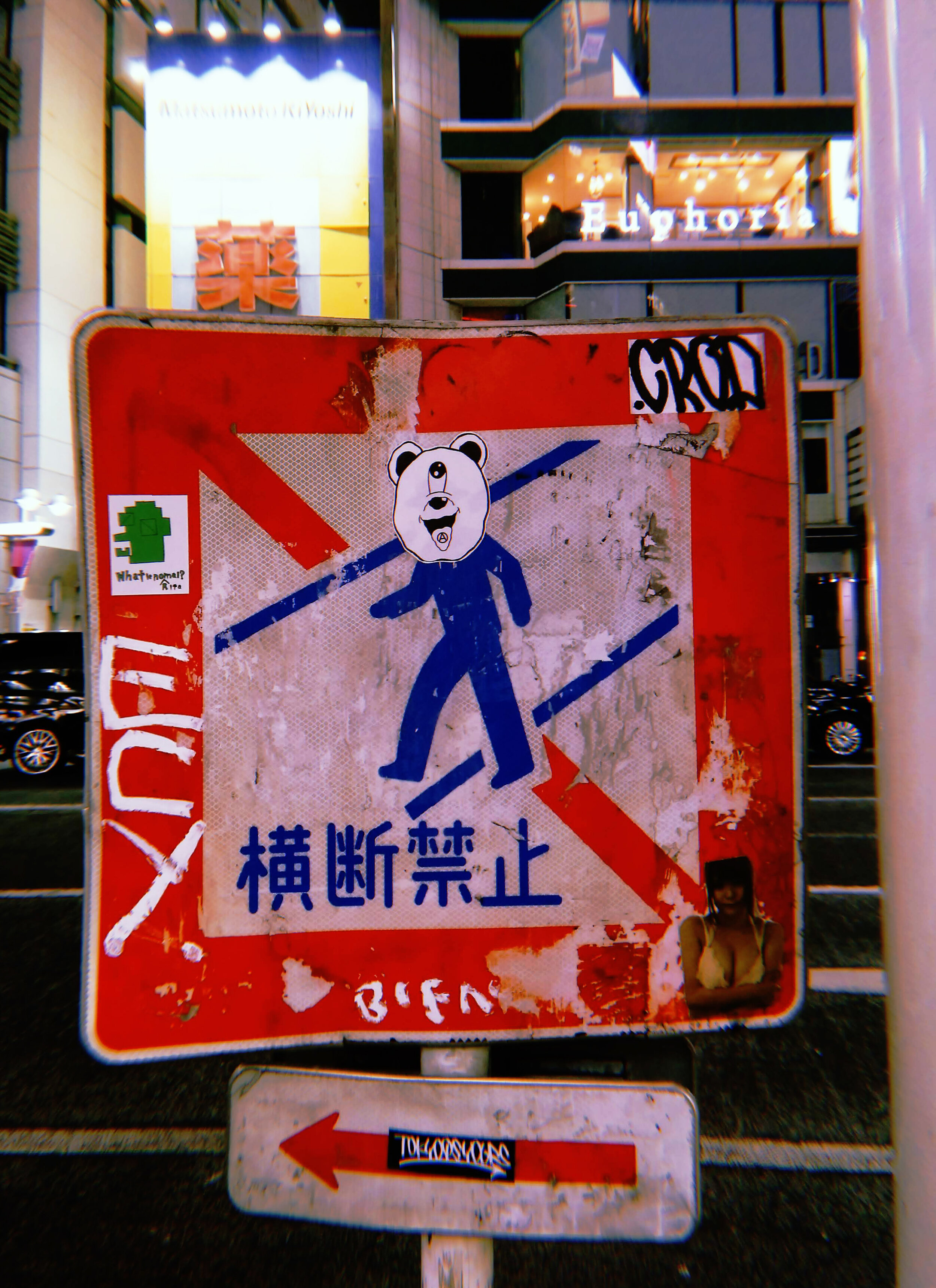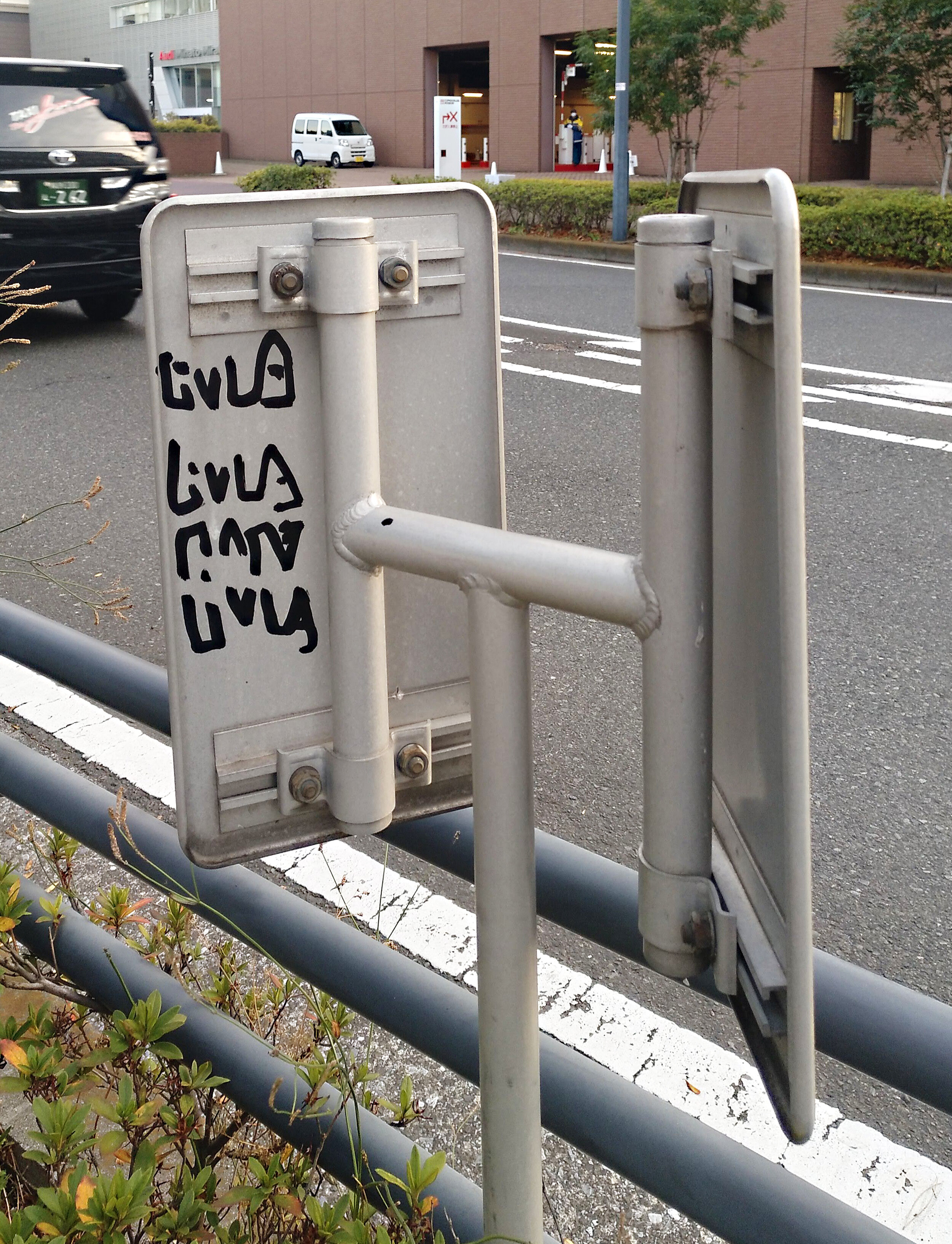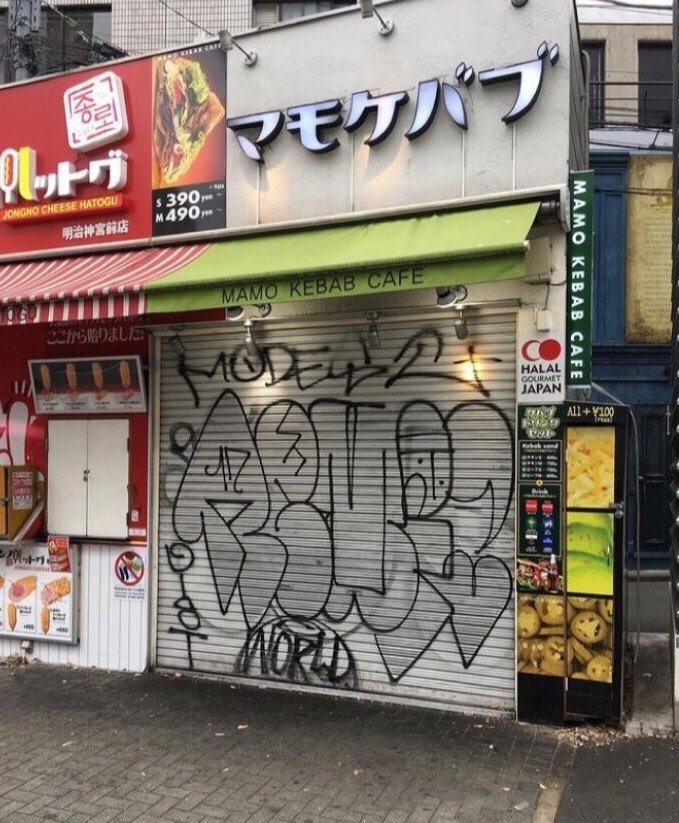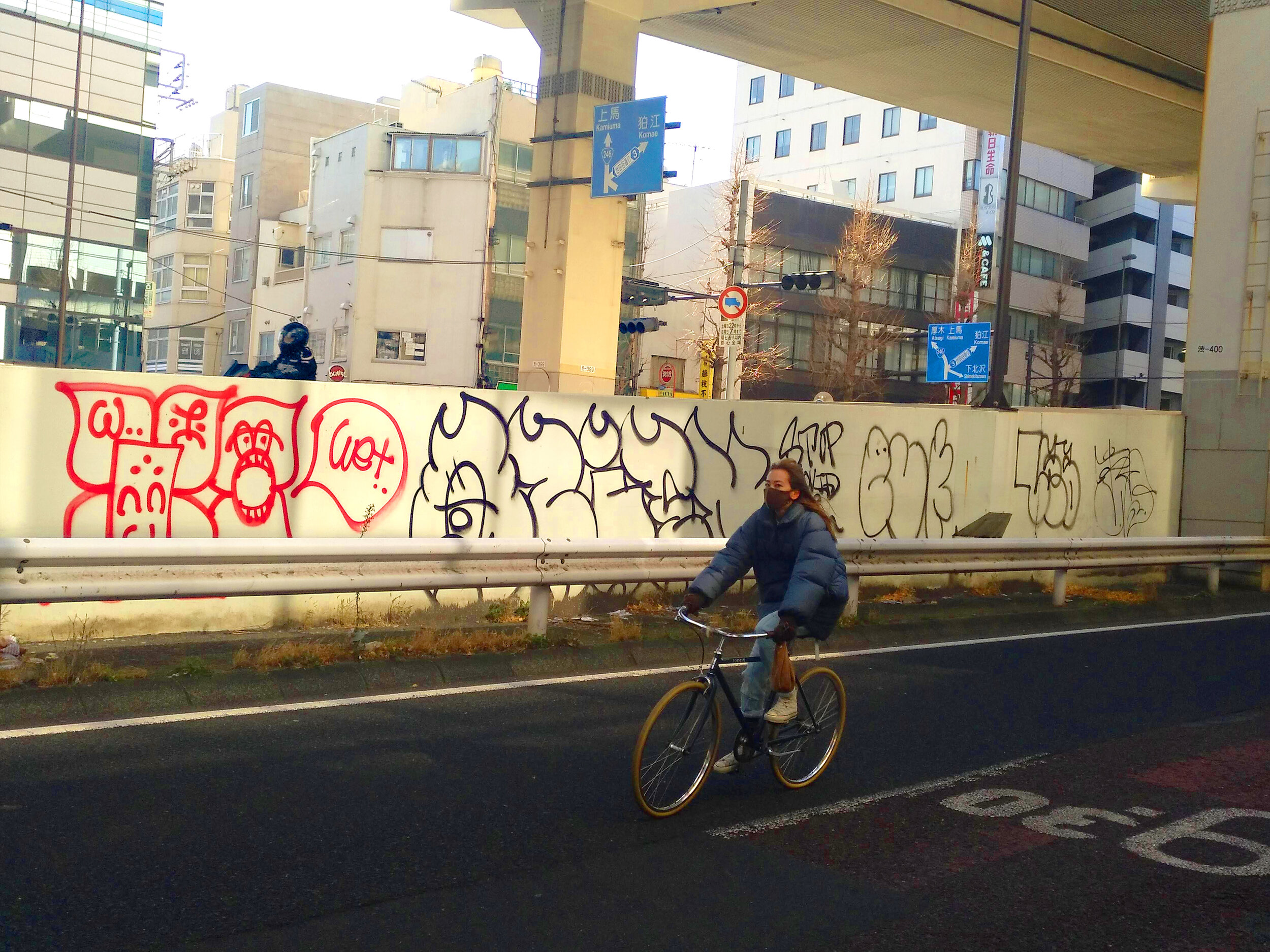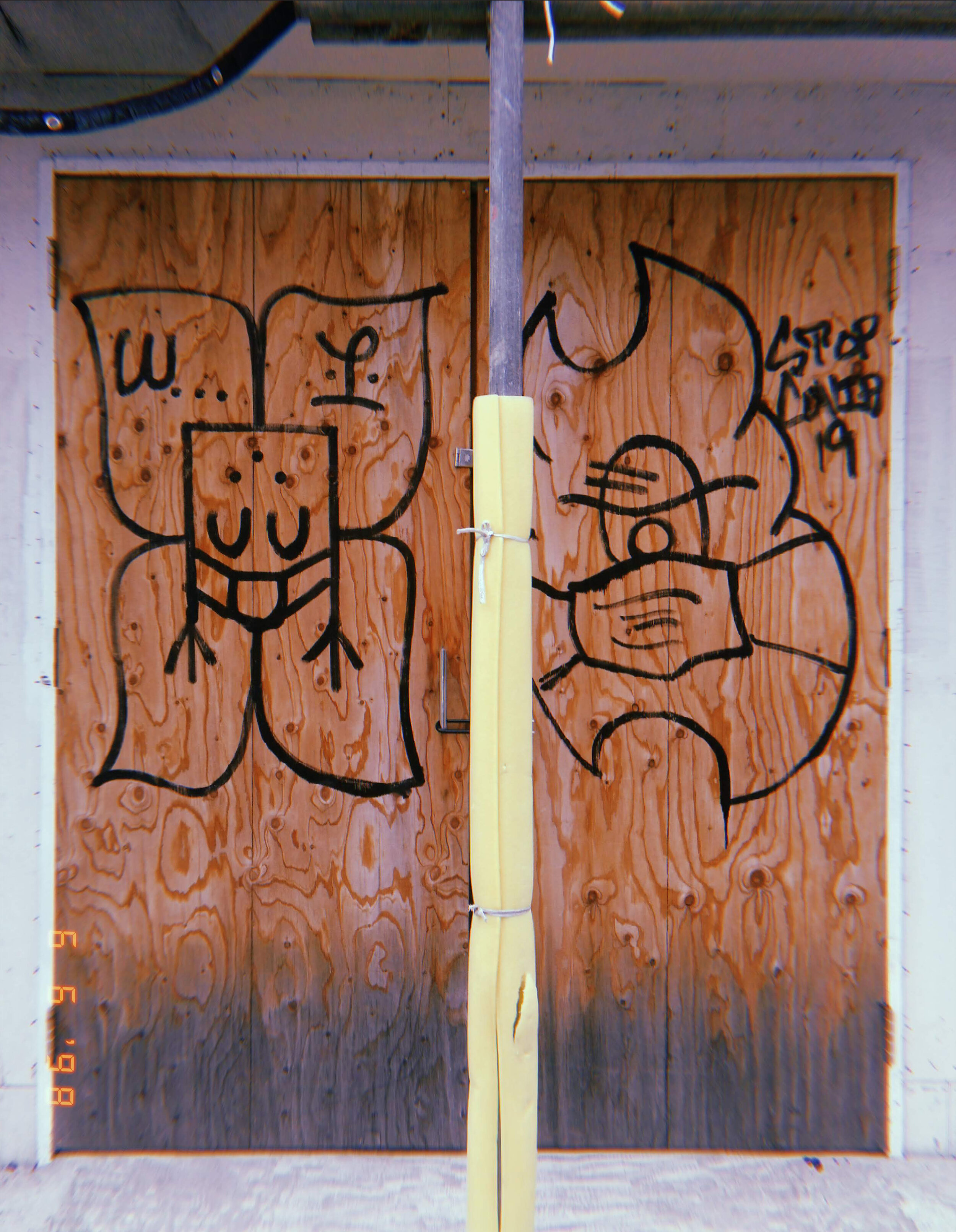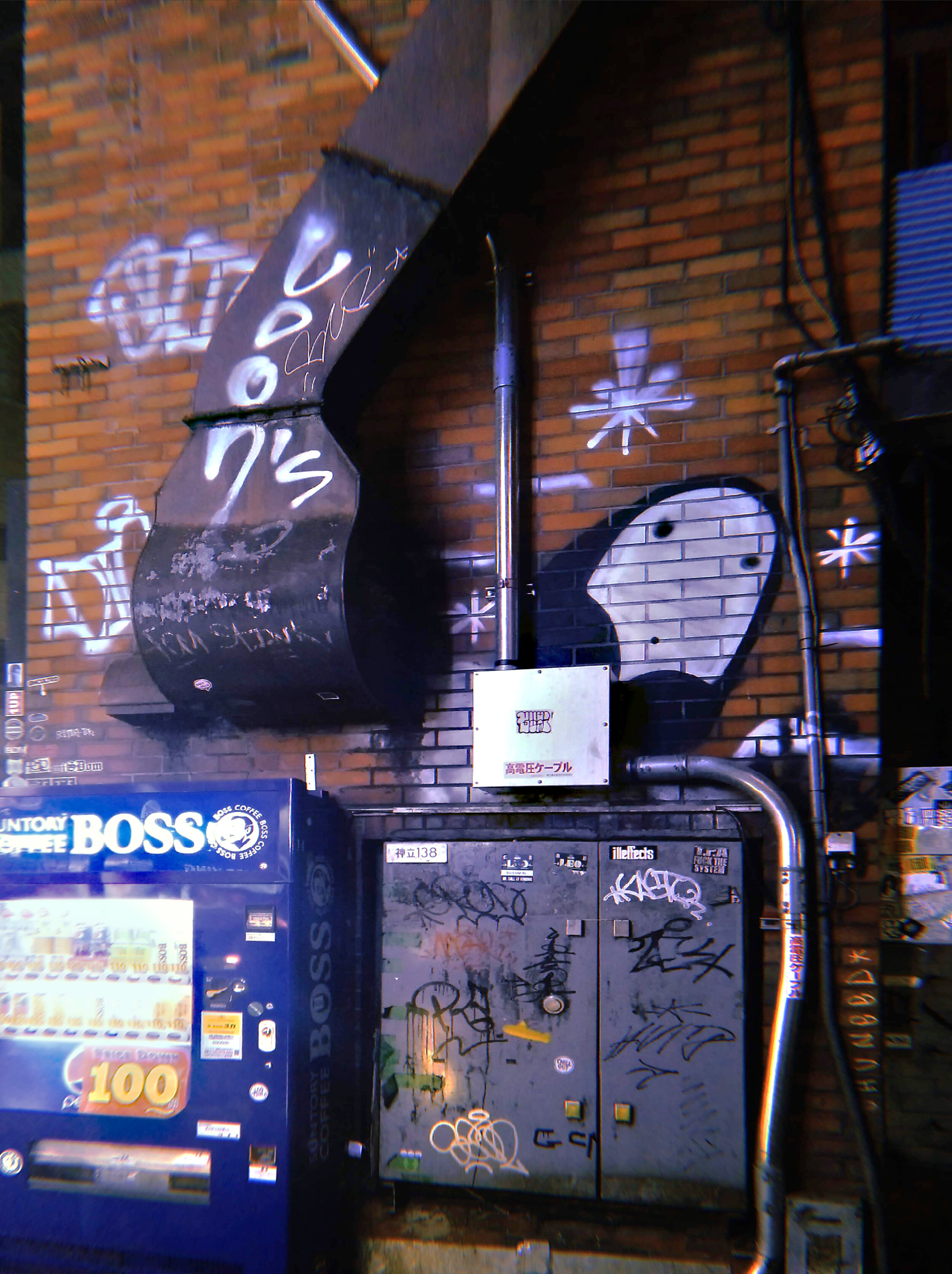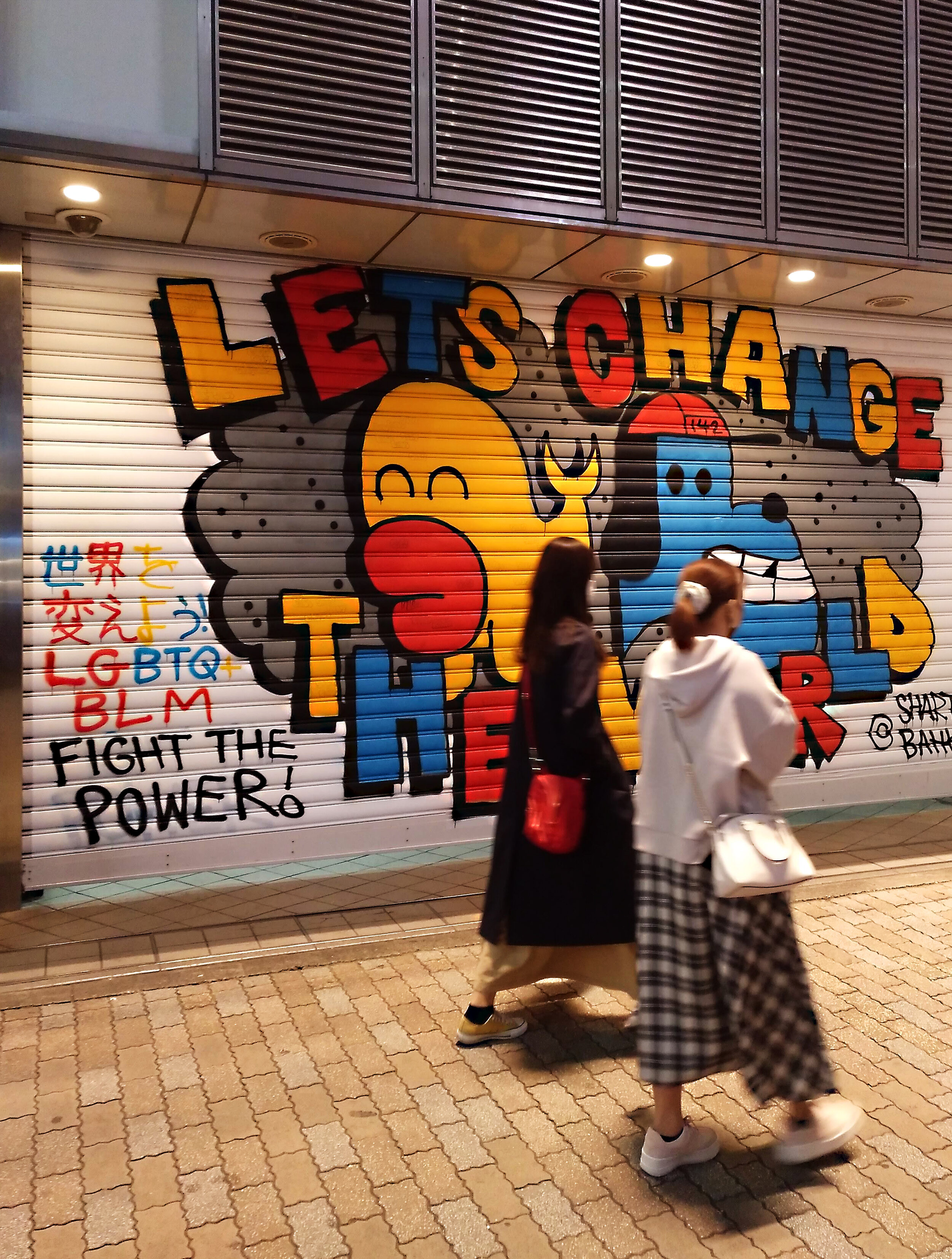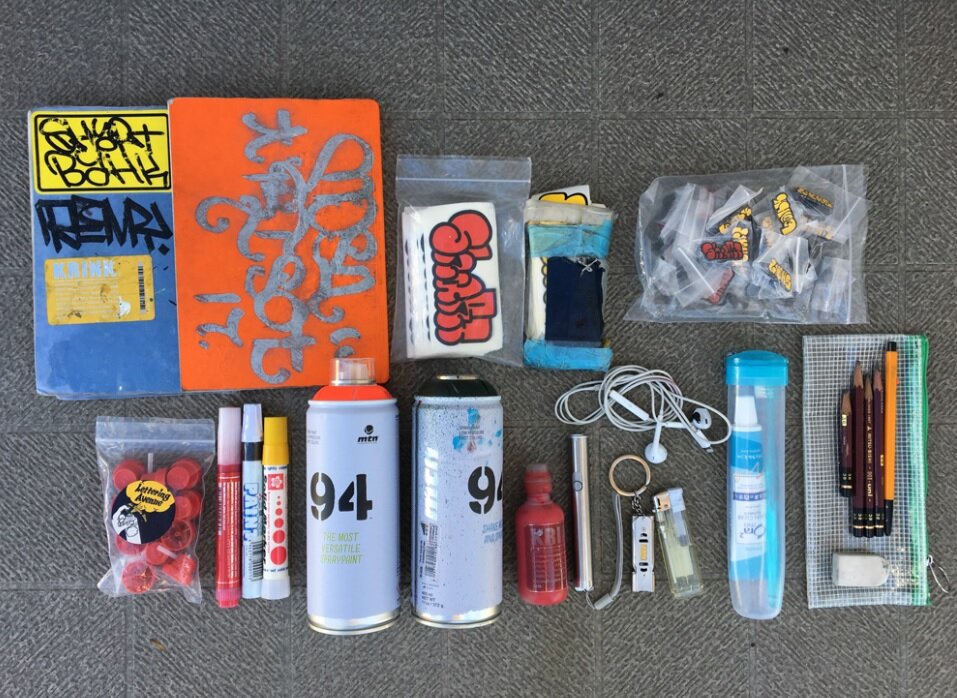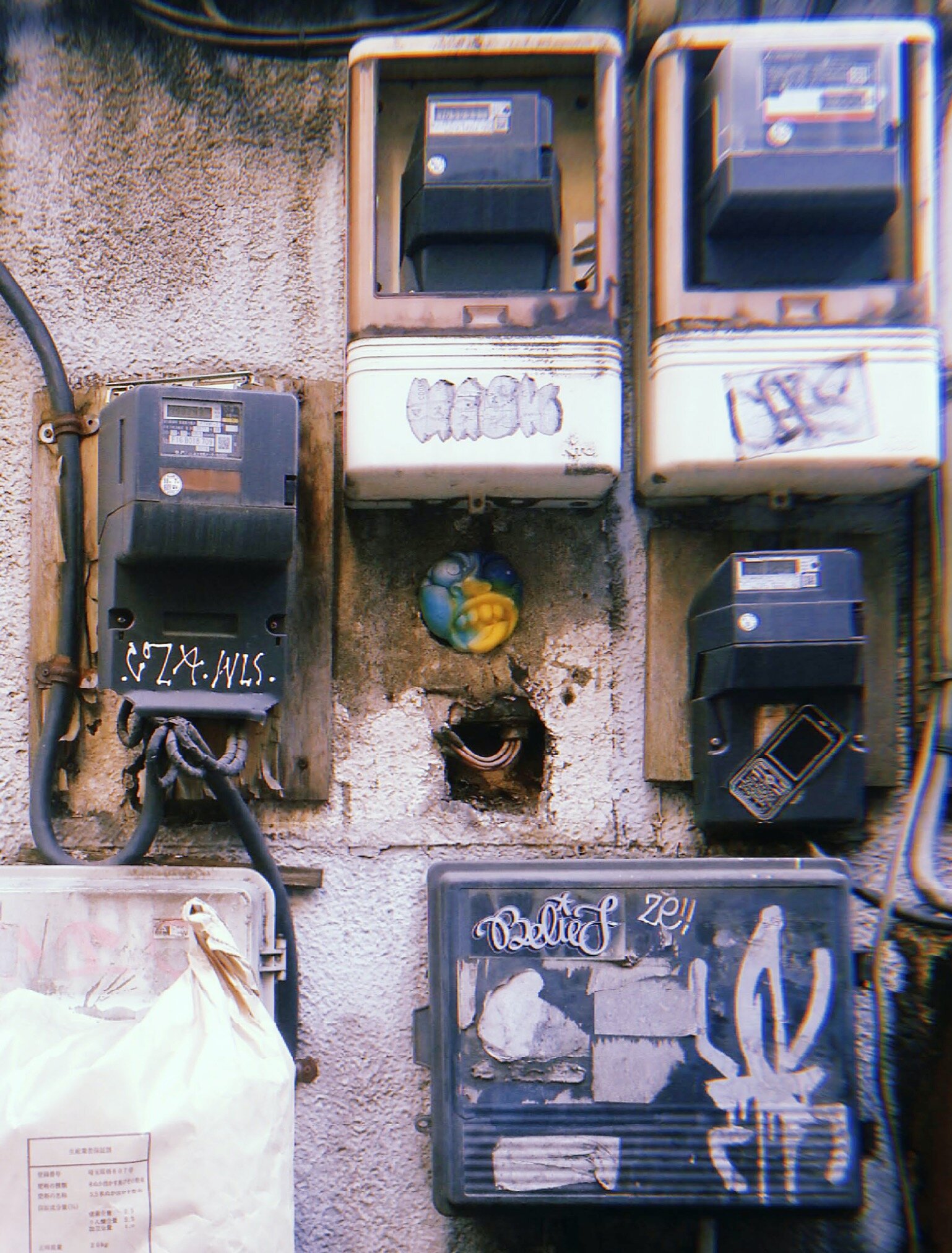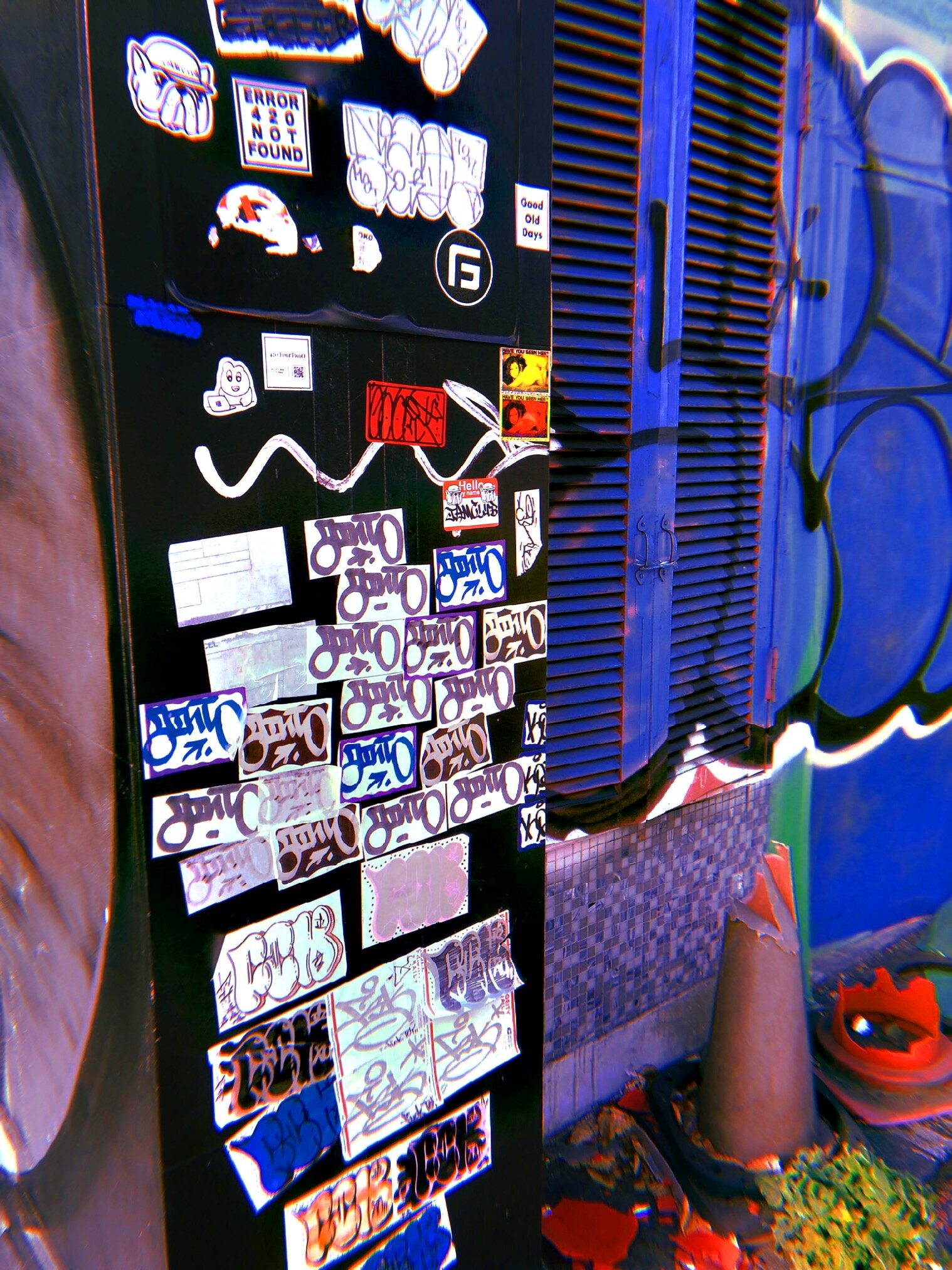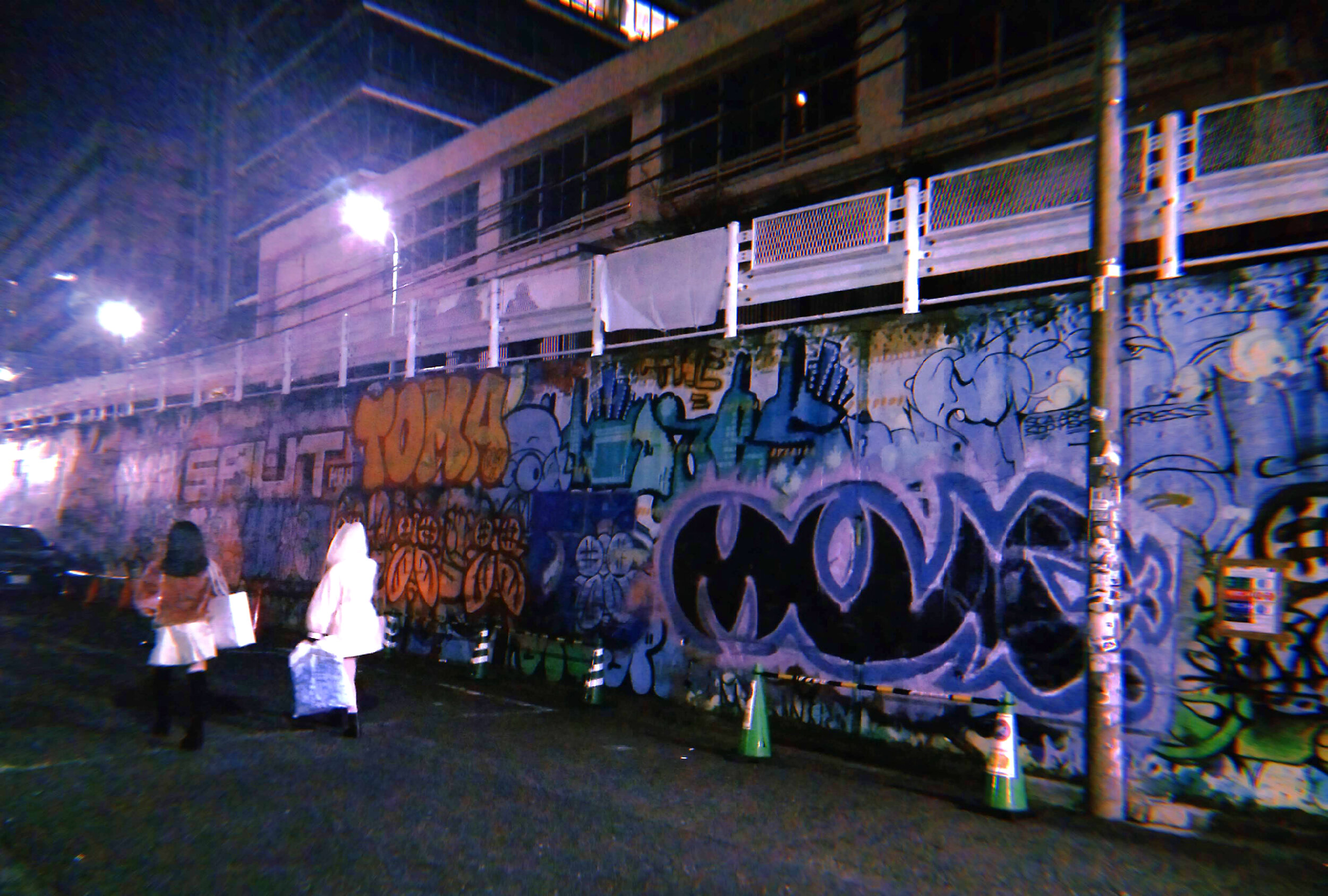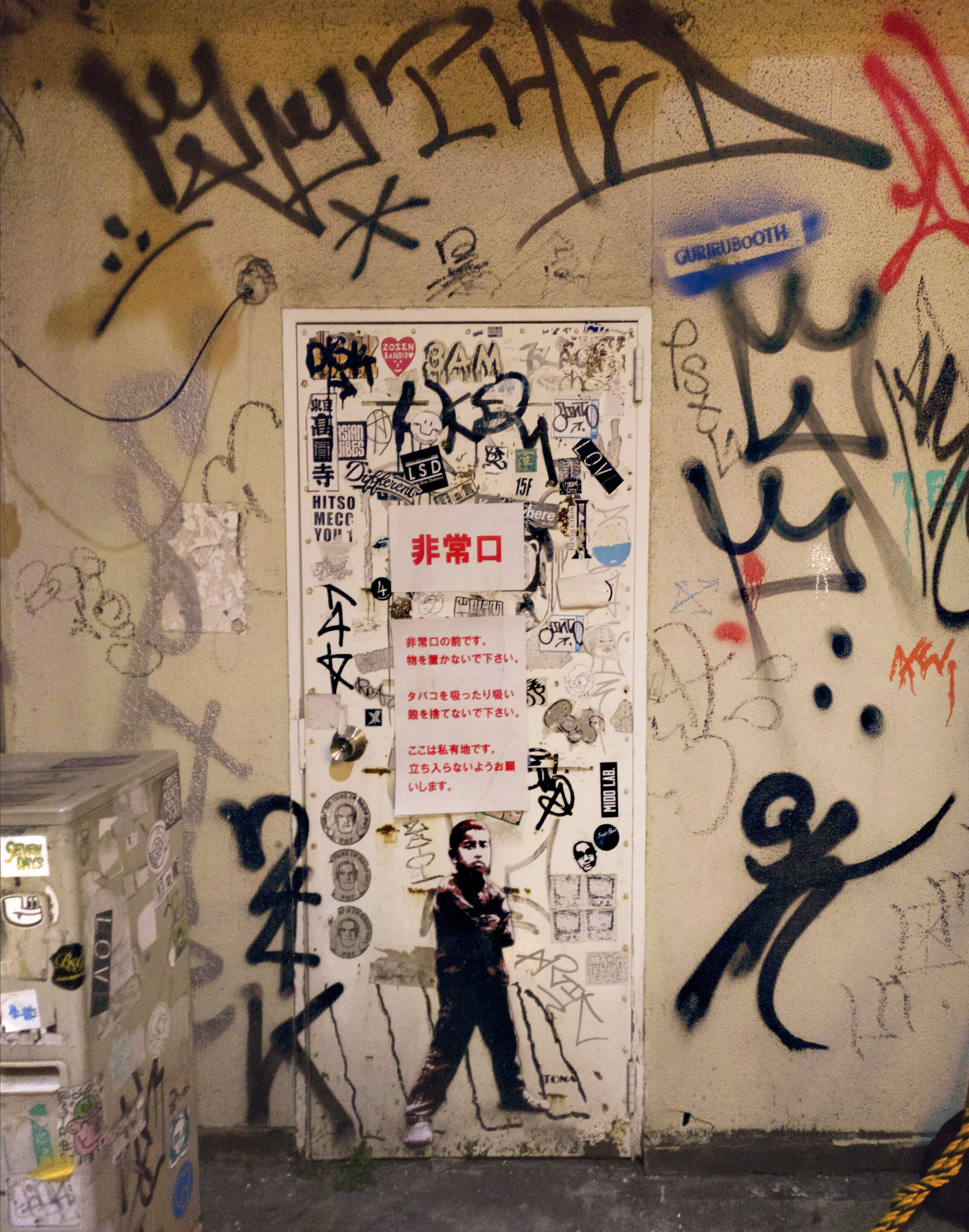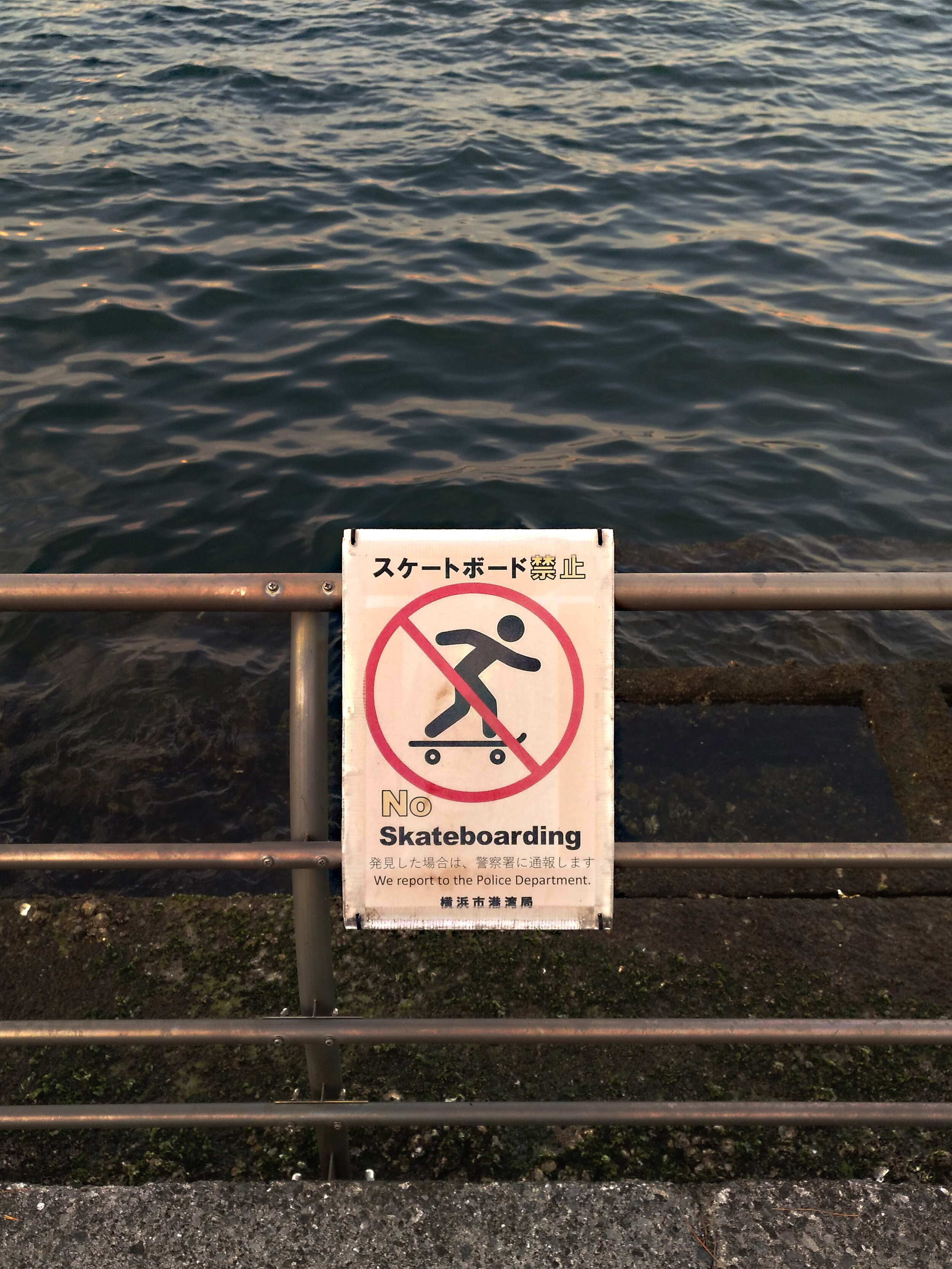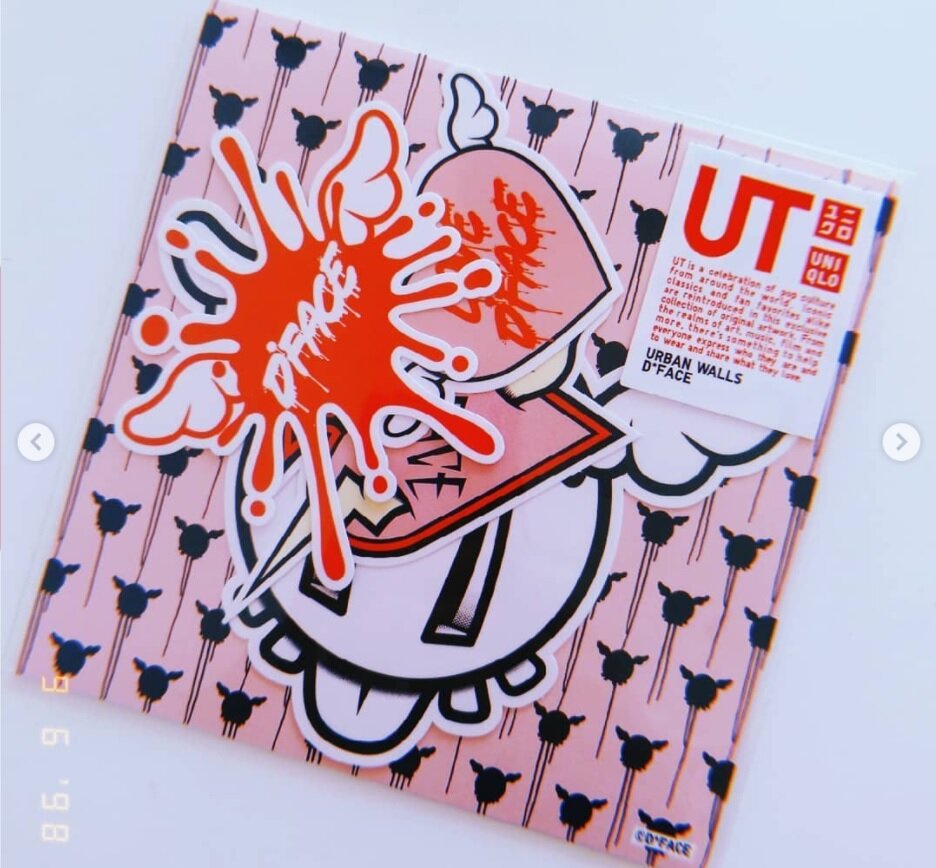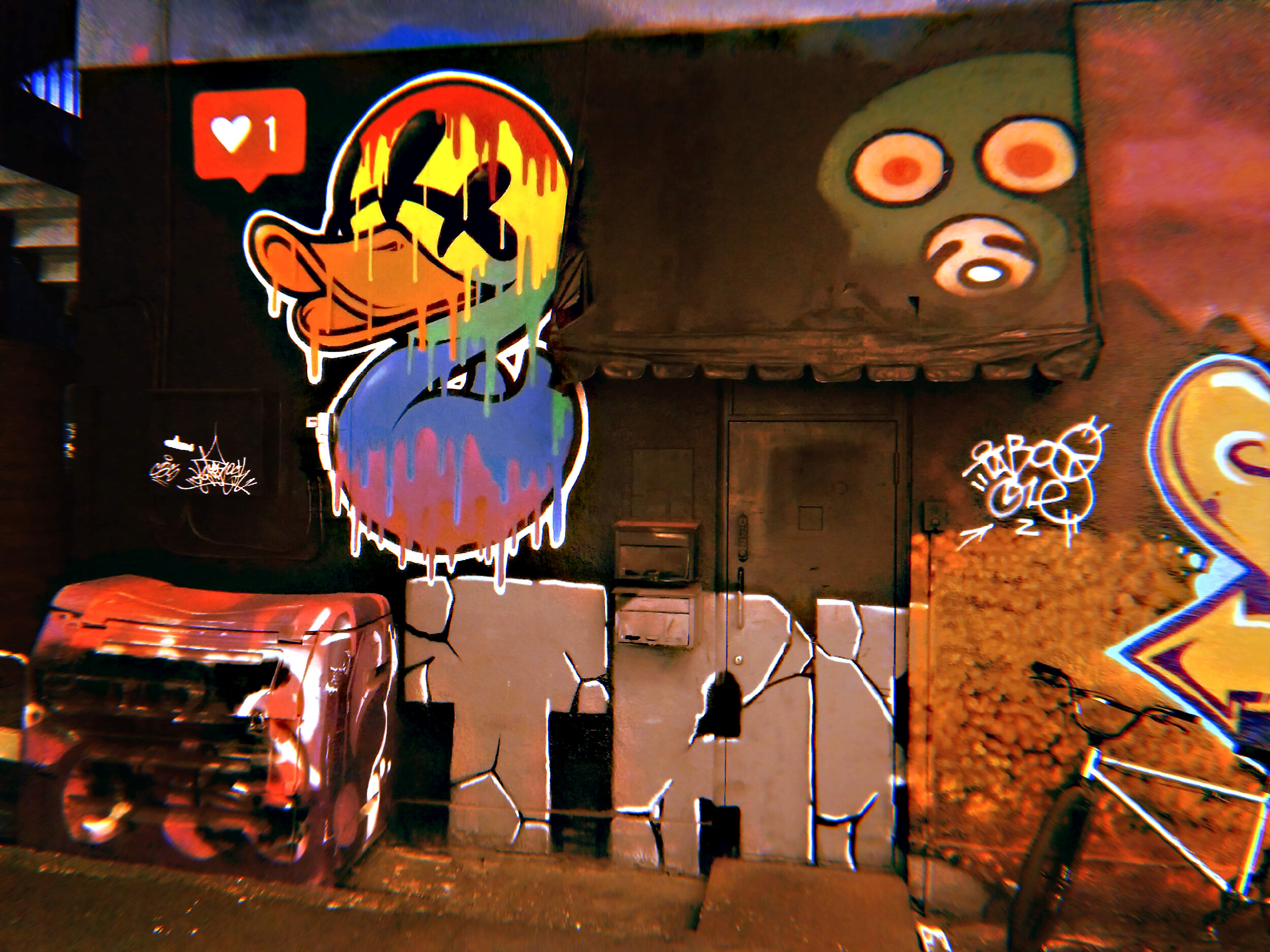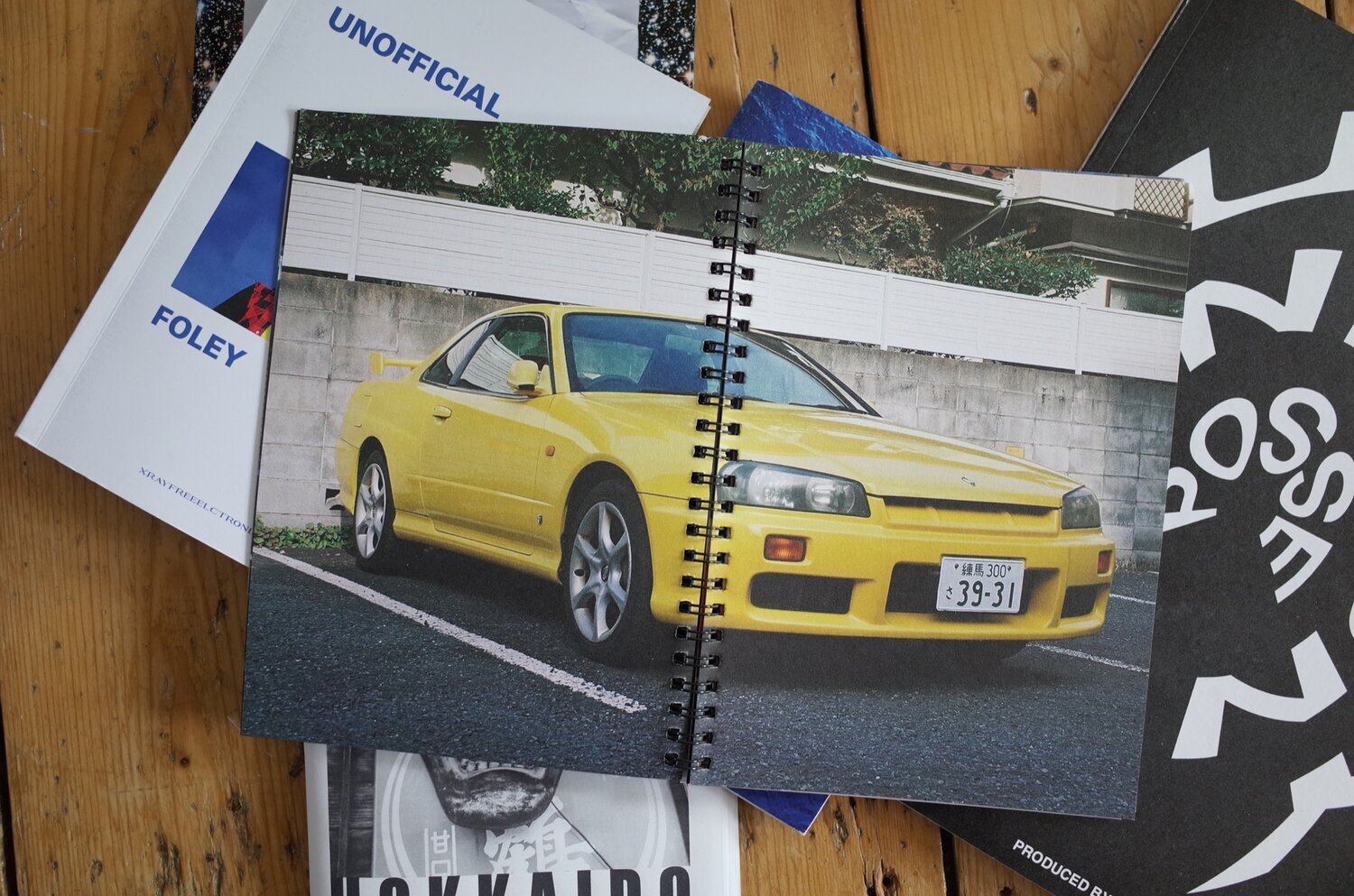GRAFFITI CULTURE IN TOKYO: THE STREETS ARE YOURS

The graffiti and street art scene in Japan was late to develop compared to other parts of the world.
This article provides a general overview of both sides, the main writers from illegal graffiti and their respective crews, as well as those considered to be the most prominent Japanese urban artists /muralists in the last decade. It also serves as an analysis of technique, execution and style most commonly used by them and the reason for these methods of action. The Japanese society and its repressive regulations play a key role in the understanding of this type of public artistic expression.
One of the few publications that we can find about graffiti in Tokyo, begins its prologue by asking this question: "Does urban art exist in Tokyo?" and they affirm that it does, but insist that the strict laws against vandalism and the conservative Japanese culture have almost completely suppressed this scene.
As we know, the Japanese generally like to keep things clean, neat and nice so graffiti is not something the country, or at least the government, likes to show off about. The word "graffiti" in Japanese translates to rakugaki [落書き], a term used to refer to the type of doodles that children make on class desks.
It might seem from our European /American perspective that Tokyo and Japanese cities in general are places full of lights, signs, colours, advertisements. An overwhelming world as far as visuals are concerned. But the truth is that this world of colour can only be found in certain parts of the city - the rest of the metropolitan area is sadly grey and anodyne. Finding both classic illegal graffiti and legal mural in Tokyo or other large Japanese cities, like Yokohama, is almost an impossible task.
In order to find them, we have to explore into the smallest and most remote alleys or visit the bridges of large roads on the outskirts of the urban areas. Graffiti in Japan is almost non-existent, and in recent years even more so, and here we are going to talk about some of the reasons why.
Feeling of community and respect for the public property and public spaces
High penalty fees and even jail sentences
High surveillance [lots of security cameras]
Severe cleaning policies ["face wash" facing the new international tourism and the future Olympic games].
In an interview, the Japanese graffiti artist SAYS, answered the following regarding the differences between the graffiti scene in his country and the rest of the world:
“I haven’t been to many countries, but isn’t it unusual for Japan to have so few legal walls in the capital? I think so. Japan has a very small population of graffiti writers, compared to the rest of the world. I think the number of writers is extremely small. However, I think the fun thing about Japan is that the scene is still developing.”
It is funny to appreciate the meaning that graffiti has for this society shown in a video of some famous youtubers who live in Tokyo. In the video they made a summary of the most dangerous neighbourhoods in the city of Tokyo, in which Adachi and the Kabukicho area in Shinjuku were mentioned. In the most dangerous of them, it was cited that the reasons for this were that: there was high crime, due to drug gangs, the presence of a lot of garbage in the streets, even that there was a prison in the area and above all lack of security cameras [which makes it a more ideal area for writers]. But it was also pointed out that another reason for this danger was that it was full of what they described as "scribble" pejoratively [showing a electricity box full of stickers and tags] next to some bottles scattered on the floor.
In an interview with the author of one of the best Instagram accounts with documentation of Japanese graffiti, he mentioned how the national police operate facing illegal graffiti:
“Through cameras, cameras, cameras! They are always controlling the security cameras. If someone is caught for the first time it is not so serious, but the second time they go straight to jail or have to pay a lot of money”
In the center of Tokyo, the neighbourhoods in which the most accumulation of graffiti can be found are Shibuya, Harajuku and Shinjuku. Also considered the most chaotic, "dirty" and crowded in all of Tokyo. And lately we can find lots of tags and stickers in the considered as the new “hipster”, “bohemian” neighbourhoods like Koenji or Shimokitazawa.
The funny thing is that a large part of these pieces (or at least the pieces that stand out the most) which attract the most attention or play with new techniques are usually made by foreign and not native artists. These international artists probably make the most of their short stay in the city bombarding as much as possible, with numerous large pieces and stickers.
“But today, as you know well, graffiti is all over the place – in Madrid, in Rio de Janeiro, in South Africa, in London, in Buenos Aires. You find graffiti everywhere you go. As you said, in Tokyo it might not be a movement, but they have graffiti trends”
GRAFFITI CREWS
Finding native graffiti artists is a bit more complicated. Even so, there is the group [crew] 246 in which are the best known Japanese graffiti artists in the country, apart from a few foreigners, who join them to create the best plan to painting and find the best locations in town. This crew has been in charge of bombing [An act of painting many different walls inside one city area or train within a very short timeframe. To “hit”. Graffiti bombers are prone to using simpler styles, tags or throw-ups, because speed is an important factor. It can also mean – to go out writing] practically all the shutters of establishments in the city, both in the center and in the suburbs. Although unfortunately in recent years they are not that active as they once were in the 90’s and the 00’s.
In articles written about graffiti in Tokyo in which this crew is mentioned, some members stand out who are currently very difficult to find, since these pieces have already been erased. However, new graffiti artists have gained popularity, taking over a large number of commercial shutters and party walls in the city such as MINT[o].
Other big names in the world of throw-ups are: KUSE, STYX, TECK, BOX, FUREE, MEOR, MOTOW, MOSU, KOLT, SEE, VIEW, EERASE, MAKS, OURS, PAKY, ODEN, PEMEX, NERO, SYUNR, KEGO…
But as we have said, the most important graffiti group in Tokyo is called 246 [which includes members from Japan as well as the United States, Mexico and Taiwan], including names such as: MQ, SODUH, PEAR, RESQ, SAYM, YU and ZOMBRA . The most important of them in Japan, for being the founder and currently being one of the most present on the scene is WANT[O].
He has giant geometric block letter pieces painted in nearly every ward in Tokyo. Using flat exterior housepaint, he rolls out giant geometric grotesk capitals; he usesspraypaint to outline the letters and add a drop shadow. Popping up along most major train lines and on top of buildings seen from the highway driving in and out of Tokyo, these pieces have both a scale and frequency that is staggering.
The same can be said of writer SECT’s treatment of huge portions of Sangenjaya and Futako-Tamagawa, back-to-back stacked throw-ups lining the Den-en-Toshi line train tracks. The hastily spray-painted strokes loop from side to side, the overspray doing half of the work from the can being held back half a foot from the wall and finished off with a few quick outline strokes.
Other names that we can find associated with this crew are: Tom, Blake, Rust[o], Noe246, False, Dart, Howa, Mkue, Mowa, LPS, GKQ, HYPE, EKYS or SAUTE.
The American graffiti artist NOE246 said about this crew:
“I like Asian graffiti culture and when I was in Tokyo for a while I met the 246 crew and I painted a lot with them. We went outside together and exchanged ideas on how to bomb the city. Of course, I also value the American scene, but I especially respect Asia’s unique graffiti culture, and I continue to work under this name to introduce the world the best crew of writers in Asia”
Another crew that has been written very little about but is very present in the current scene in the form of throw-ups and stickers is 24K /24Killaz, among which we can find names such as: HENKA, GNASH, BAMS, JSONE, SPEWM, SHAKA, DART, SOLAR, PHOBIA, XEME…
All of these writers typically have the same style, with readable and simple throw-ups. A throw-up sits between a tag and a bomb in terms of complexity and time investment. It generally consists of a one-color outline and one layer of fill-color. A throw-up is designed for quick execution, to avoid attracting attention to the writer.They are usually Bubbles [Bombs /Bubble Letter] without much ornamentation. And thanks to their constant bombing and repetition of pieces, they have become one of the most respected crews on the Asian continent.
INDEPENDENT GRAFFITI WRITTERS
We can also find on the streets of Tokyo a great extent other world-famous international graffiti artists, who in general take advantage of their visit to the Japanese city because of their individual exhibitions, to leave their mark on the city.
UFO907. American, who, taking advantage of his 2016 exhibition, bombarded the entire city with his characteristic alien character, in multiple shapes, sizes and formats.
REMIO Artist originally from a very small island in Norway, currently based in Los Angeles. He has come to the city of Tokyo several times to hold solo exhibitions such as the 2016 "FREE HABIT" one-day art show in Harajuku. And his solo exhibition "Cereal milk" in Daikanyama at Jinkinoko art gallery, in 2019.
LISTER Anthony Lister is a contemporary Australian artist. Lister helped pioneer the street art movement in his home city as a teenager and is considered Australia's premier ‘street artist’. His scrawling, figurative style employs charcoal, acrylic, spray paint, and oil. Last year he had an exhibition titled Rude Words at Megumi Ogita Gallery in Tokyo. During the visit at the capital for his first solo show, Lister also did some interventions around the city which caused his arrest and subsequent stay in prison for 12 days.
Japanese:
TOKYO IS YOURS. A way between graffiti and "character". We can describe it as graffiti by using spray or marker as a medium, but it is not a tag but a quote. He has been bombarding the slogan at least since 2014, of which we have proof thanks to an article by TimeOut Tokyo where they compile some of the best pieces by this still anonymous artist. Recently [late 2020] he had a solo show at the Kimpton hotel in Shinjuku.
AKIONE, One of the few women we can find on the national graffiti scene. With her recognisable character of a kawaii girl. We can find it both in spray and in numerous stickers. In her most elaborate pieces, she experiments with wildstyle,where the convoluted and interlocked letters, arrows, spikes and other decorative elements merge into one another making it difficult to discern what has been written. The complex pattern of letters and other forms creates dynamic abstract images where letters can only be detected by professionals. She also uses elements of anime, and manga.
WOOF-ONE. Flower figure. One of the most active today, both with spray and with stickers techniques.
MAW With his characteristic face inspired by cartoons.
UDON Also with his characteristic ghostly black and white character.
SHART / BAHK each with its characteristic animal character, a whale and a dog. They are two very young brothers who collaborate together on multiple occasions, both using graffiti and stickers, and their creation of fanzines stands out. They recently made a mural together against racism at a shutter of a Shibuya establishment [Shibuya Legal Wall Project]
ZERA With a funny cartoonish face character.
HENOHENOMOHEJI / HENOHENOKUTSUJI Figure that is composed of the seven hiragana characters "he, no, he, no, mo, he, hee", which are used to draw a face.
山田 丸 [Yamada Maru] KHN With two characters, a stick man with a crown and a kind of helmet, it can be found on numerous occasions, but especially in Yokohama area.
YUSE Also with a funny character with round face. It’s one of the few ones that apart from spray paint or stickers also use small sculptures as public interventions.
PREDOMINANT TECHNIQUE:
Can we see the difference between styles in different countries? Does each country have its dominant style? Maybe yes. Each style requires a technique and what is more important, a certain execution time. Making a tag is quick and easy, while a wildstyle requires greater skill when using the spray and more quietness to carry it out. In general, it requires the use of more colours and a more elaborate technique, something that is not needed in throw-ups and antistyle [those types of graffiti trends that voluntarily try to produce a neglected or even grotesque result.]. In Japan, curiously, the most prominent styles are, in terms of the spray technique, these last two. And the use of the tag and the sticker are very widespread.
It is probably due to the short time that writers have to make their pieces. For this reason, it is very rare to find more elaborate pieces [other than in legal murals].
On the other hand, stickers are easier to find, especially on billboards and traffic signs [since it is the fastest form of Street art that exists when it comes to intervening on the streets]. There are multiple accounts on Instagram dedicated exclusively to sticker art [stickers, usually with the artist's signature or symbol /character] from Japan. But we can also find stickers from famous international writers such as the omnipresent BNE, or CROD, ARES, D * FACE, ATOMIKO. [1] Benet business-card-sized BNE参上 (BNE has arrived) stickers are an omnipresent aspect of the Tokyo streetscape. Composed of screenprinted vinyl backed with an industrial adhesive, they do not come off easily like the works of other writers who use peeledback paper ‘Hello, My Name Is’ stickers and United States Postal Service Priority Mail address labels. Tokyo retailers have taken to scraping the stickers off with a razor as chemical compounds don’t seem to work very effectively.
NOE246 says in his interview that stickers are a widely used tool especially in cities as populated as Tokyo.
“The stickers are just a tool. It’s a good technique especially for busy cities. One of the fundamental purposes of Graffiti activity is the idea of spreading your name to the greatest extent possible. That is why stickers are the best way to do it. Nobody cares if people see you. It is the safest way that provides high quality pieces and causes less problems”
“In Tokyo, even painting with markers carries a lot of danger. Then I realized that the safest and fastest way to bomb is with stickers. So I decided to put the name of the team that I admire 246 on a sticker and make tens of thousands of them”
Ian Lynam, author of the book Parallel Strokes, 2008 in which he analyzes graffiti and its typography, affirms that Tokyo writers have been influenced in terms of technique and ways of doing it by American crews such as MSK. He says that the two also coincide in terms of quantity and placement of their pieces.
As he explains, these crews have basically focused on producing as many signatures and throw ups as possible, leaving aside the more “pictorial” aspects of graffiti. It is therefore more about a type of language, a form of communication between all the members of the various groups, than art. How it was done and where is more important than what. The location is very important, the riskier it is, the more social relevance the writer will achieve.
It is a form of wild communication, which the general public does not recognize, but is obliged to live with it, since it is in the public sphere.
“Long work days and long commutes leave city dwellers with minimal time to inhabit private space, making them more or less a captive audience for the Tokyo cityscape spectacle and how writers decorate it”
Finding more elaborate pieces in the city is practically impossible. We can only find this type of piece on the outskirts of big cities, generally in abandoned buildings or skate parks [ e.g.: Tetsuwan X Park Inage Naganuma en Chiba], where graffiti artists can paint more relaxed and have more time to develop their creativity.
There are some walls in the city [belonging to private establishments] that allow it to be practiced with the permission of the city council and they usually invite international urban artists to capture their works such as the Manhattan Records store in Shibuya, Design Festa cultural space in Harajuku or the space located in Shintora Village [Toranomon Hills].
Large pieces [made illegally] in the city center can be found in very specific locations such as Udagawachō street, Shibuya, just behind the Manhattan Records store, or the famous abandoned building behind the post office of the city at Miyamsu Zaka street in Shibuya as well. These locations have been painted and tagged for almost a decade by both local and international writers.
Another interesting artist is QP, not as legible as the other writers on the scene, since he uses a mixture of letters and symbols, and always monochrome. He plays with all kinds of formats and locations and also does many projects for galleries.
URBAN INTERVENTIONS
While on occasion we can find tags and throw-ups, street art or what we qualify as urban intervention ]such as sculptures, installations, adbusting(the practice of altering and making satirical interventions on public, corporate or political advertisements. It’s marked by humor, satire and often sharp criticism of certain societal issues, most often consumerism.)…] is completely non-existent. Even practices as widespread in Europe and the United States as paste up[Wheat paste or flour paste is an adhesive made of flour or starch and water. It’s used to glue paper-based images to a wall, giving a name to a street art technique] or stencil[Stencil pieces are made with stencils made out of cardboard, paper and other materials that help create a nice, figurative image quickly and well. The pre-prepared design is cut out and then transferred onto a wall with a spray or roll-on paint. Easily repeated on different walls.], are practically non-existent in Japan. That’s the reason why the most prominent pieces that we can find around town are from foreign street artists.
The only example found of this last type of practice has been this anonymous artist who transforms the so famous garbage cans in Japan that are placed next to the drink dispensing machines, placing arms, mouths... and somehow humanizes them [although being done digitally, we do not know if it can be classified as urban art...]. All his digital interventions carried out since 2016 can be found both in his Instagram profile and in his eponymous book published in May of this same year 2020. It is an example of only virtual public art [only through images and a screen] without being materialized.
The characteristic mosaics of Space Invaders [French urban artist] can still be found in many streets of the city[30]. Probably the most famous of them is the character of Astroboy placed in a passage in Shibuya. In Naka Meguro next to the river you can find another one with motifs from the country such as Mount Fuji. These curious mosaics have been placed over the years in 1999, 2002, 2010 and 2014.
Artist based in Hamburg, Germany. He carried out a project in 2019, placing stencils with characters of Japanese children throughout the city. In Koenji for example, we can still find a large number of them.
An interesting artist from Japan, who we could include more in the sphere of street art than classic graffiti is Diego [SIDE CORE],part of the @everydayholidaysquad. Altogether they have made numerous interventions in the city, but one of the most interesting is the placement of "fake" signs around the city, in which you can read "Forbidden to paint graffiti" with a somehow artistic design that includes the figure of the legendary Keith Haring.
This continuous repetition of posters prohibiting the playful use of public space is sometimes as annoying as advertisements. No smoking, no parking bikes, no skateboarding… On the streets we can find almost the same number of signs prohibiting the practice of graffiti as skateboarding.
It is curious to see the relationship that exists between the practice of skateboarding and graffiti, since 90% of graffiti artists have practiced it sooner or later. This is due to the fact that both graffiti and skateboarding are activities adopted as a lifestyle, they combine a feeling of freedom and rebellion against the established; they are two determining languages in the visual vocabulary of young people as a way of appropriating reality. The two manifestations imply situations of risk, play and occupation of the public space and entail a first-instance bodily experience.
The development of skateboarding and graffiti in the field of design confirms how the same element is valued differently depending on the medium and context: it is illegal on the streets, artistic in galleries, and a question of fashion and identity in clothing. Both activities involve years of preparation and practice, creativity and originality, experiential learning and improvement.
A “Hall of Fame” can be found in the Tetsuwan X Park Inage Naganuma skate park, in the province of Chiba. The pieces are much more elaborate there and are constantly being renewed by all kinds of artists on the national scene.
Graffiti, Skateboarding and Design invites us to reflect on the invasion of “legal” paid advertising and graffiti, which occupies the same space, but becomes a criminal act. Similarly, the practice of skateboarding is illegal or discriminated against in a street scene, but commercially accepted when it comes to sell products and accessories necessary for its execution.
For example, the well-known Japanese brand UNIQLO launched in 2020 a collaboration called UNIQLO UT URBAN WALLS, in which we can find designs on t-shirts, bags and stickers by artists such as D*FACE, LADY AIKO, André Saraiva [artist whose work was recently buffed from the public space].
INTERNATIONAL JAPANESE ARTISTS
Does this mean that Japan does not have great artists who dedicate themselves to graffiti legally? Or how the media likes to label them: street artists or muralists? Of course not, there are many Japanese artist of incredible talent. Some of them are very famous even on social media and are not afraid to show their image in public. However, the vast majority of classic and illegal graffiti writers in Japan prefer to stay anonymous when it comes to advertising their image.
On the other hand, this type of practice being generally legal, artists enjoy more time to produce their pieces and promoters/organizers provide them with large spaces and good quality materials. Many of them live outside the country and curiously, in this category of "muralist" artists we find a greater number of women.
One of the most recognized graffiti artists in Japan, heavily influenced by Twist's work, paints characters very similar to McGee's. He started out as a skater [he belongs to the Tokyo skaters group called "T19" and is also a member of "Ryokudokai, RDK]. In 2013 he gave an interesting interview, in which he mentioned that practicing skateboarding had helped him to get to know the city in other completely different way and find the best “spots” to capture his work. He discovered graffiti after moving to the United States when he was 17. His work can be seen in a wide range of media, from murals, canvases and clothing brands. Characters [traditional Japanese style] usually appear in his work that show a combination of humor and melancholy on their faces, providing a unique vision of the world, using a characteristic illustrative and cartoonish style.
Raised in Shinjuku-ku, Tokyo. Besides doing classic graffiti, he also designs and creates objects with the characteristic image of his hooded characters. In 2019, he released the cartoon "Il Bros". He is also a member of "MSC", a Japanese rap group based in Shinjuku. He has made several murals at Manhattan records building in Shibuya, collaborating with other artists such as KAZZROCK or ALEX FACE.
Lady Aiko is a Japanese artist born in Tokyo and based in Brooklyn, New York. In a largely male-dominated scene, Aiko is an influential figure in contemporary urban art. "It's hard to be a woman and a graffiti artist", she once said about being a woman in the street art scene. As a consequence, her work, inspired by her identity and her experience as a Japanese woman, tries to give visibility and recognition to women and girls and to achieve gender equality.
She has large-scale works installed in cities like Rome, Italy, Shanghai, China, and Brooklyn, New York. She uses stencils and spray paint, brushes, collage and silkscreens, to create feminine pop art style wall murals. Pink, purple and gold colours predominate frequently, to add femininity to her designs. Highly respected on the international graffiti scene, she even worked with Banksy on "Exit Through the Gift Shop" in 2010. Her works were part of the 2017 URBAN NATION museum opening exhibition in Berlin. In 2018 she performed Lady Go! her solo exhibition at the Tokaido Hiroshige Museum in Shizuoka City.
Kami and Sasu are a Japanese street art group [and sentimental couple] who paint murals that we could qualify as more "decorative", with flower motifs based on mandalas and geometric games; they usually use peaceful shades of sky blue and whites. This street art duo like to imagine that their art provides the backdrop against which the human dramas of Japanese society unfold.
Born in Shiga, Japan in 1976. The concept of his artistic style is "the coexistence" of two opposites such as past and future, stillness and movement, evil and justice. He also performs improvised and dynamic live painting shows around the world and always draws a large audience. In 2015, he was invited to the well-known art festival, POW! Wow JAPAN. Since 2016, he resides and works in New York, where his art and style continue to progress. In June 2019, he held his first solo show in New York, entitled “COEXIST” at the Compound Gallery in the Bronx. Recently [2020] he has participated in the Kawasaki Street Art Project, an urban festival that we will talk about later.
Shiro finds herself, along with Aiko, among the growing number of women in graffiti and street art who are claiming her place in a male-dominated society with her work. She was born in Shizuoka, a port city in Japan, and resides in New York.
Shiro was never known for being a writer; she quickly switched into legal art works and commercial projects, like the ones she has done for major organizations like Gap and the NBA, but she doesn't see her work as less subversive to the world around her. This rebelliousness is especially true when it comes to the sexuality displayed in the murals and by her main character, Mimi. Her job is not for everyone. Some say that she only makes pretty drawings compared to the intrepid, often dangerous performance art that is graffiti writing. But others think that her work effectively exhibits fundamental elements of hip-hop, uniquely interpreted through an Asian filter.
Her vibrant images of her, reflect her love of Hip-Hop culture and old school graffiti, revolving around her original character "Mimi", a strong and dynamic model of femininity.
Her artwork is excellent examples of her fusion of Japanese aesthetics and old-school New York graffiti. She often participates in more community mural projects. In particular, she strives to work directly with children in slums and ghettos around the world.
She was born in the United States and raised in Tokyo, where she studied design and illustration. In 2009 she began her journey by moving to Barcelona, Spain, where she met and learned to love urban art. She began experimenting with techniques such as graffiti and large-scale murals. Her work is the living reflection of a child's creative spirit, using soft, bright and warm colours to express her young spirit. Mina Hamada's art began to flourish when she met Zosen [an Argentine /Spanish urban artist]. It was at this point that she defined her style through various collaborations established with Zosen and other artists from around the world.
With a style in which colour, rhythm and improvisation are the main characteristics, Mina transmits her good vibes through free and organic forms. Her work is reminiscent of the artistic current of Fauvism, in such a way that it could be a reinterpretation of it. This movement defended the supremacy of feelings and the state of mind through the free use of colour, and we can perceive the same emotional role in her pieces. She was the artist chosen by Koko magazine for the cover of their publication dedicated to Japanese street art.
About the author:
Elena Calderón Aláez, a graduate in Conservation and Restoration of Cultural Heritage at the Complutense University of Madrid. She was an active member of the ST.A.CO group (Street Art Conservators of the TEI of Athens) during her Erasmus scholarship in Greece (2014-2015 academic year). Her final degree project was focused on the conservation and restoration of works by the artist Eltono in Madrid. In 2017 she finished her Master's degree in Conservation and Exhibition of Contemporary Art at the UPV of Bilbao with thesis about Interventionist /Appropriationist Urban Artists in Spain. She is currently part of the Street Art Cities community, where she has documented murals from cities such as Bilbao, Stockholm, Reykjavik, Maribor and currently Tokyo. She has published several articles in the online magazine MURAL, researching about art in the public space.







